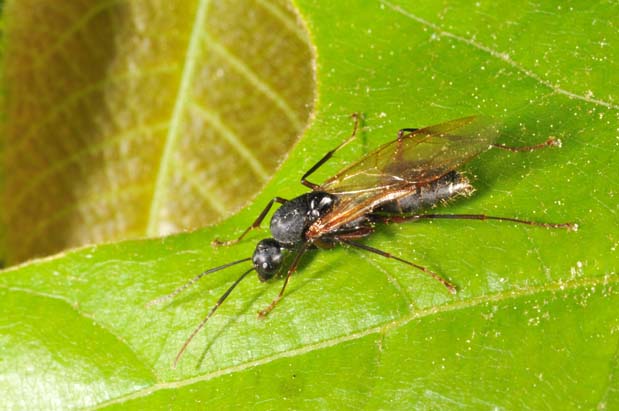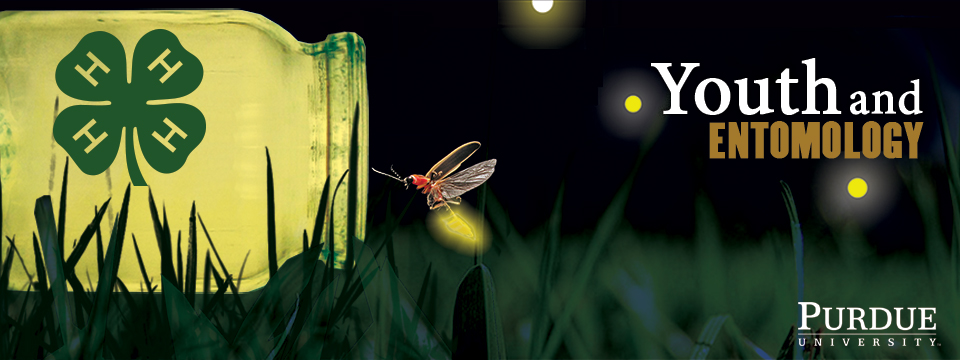

|
|
Carpenter Ant adult
(John Obermeyer, Purdue University) |
|
Common Name: Carpenter Ant - adult
See also: damage Scientific Name: Formicidae: several species Status: usually beneficial, occasionally a pest of homes and buildings Damaging Stage: adult Biology: Carpenter ants range in size from 1/4 to 3/4 inch, depending on whether the insect is a queen or a worker. Queens are large and black with some red, brown, or yellow spots occurring on parts of the body and legs. The smaller workers are brown and have a large head and a small thorax. Ant larvae are legless and grublike. They are approximately ¼ inch long and cream colored. The queen establishes a nesting site in a wood cavity. Each stage of the life cycle (egg, larval, pupal) takes approximately three weeks to complete, but cool weather can lengthen these periods. The queen rears her first brood of workers, feeding them salivary secretions. The workers then take on the maintenance, rearing and foraging duties of the colony. |
 |
||||||||||||||||
|
|
|||||||||||||||
|
Purdue Extension Entomology, 901 West State Street, West Lafayette, IN 47907 USA, (765) 494-4554 Department of Entomology | College of Agriculture | Extension © Purdue University | An equal access/equal opportunity university | Integrity Statement | Copyright Complaints | Maintained by ENTM IT Trouble with this page? Disability-related accessibility issue? Please contact us at entmwebmaster@purdue.edu so we can help. | ||||||||||||||||
